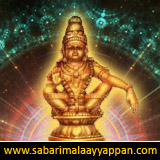The Guruvayoor Sree Krishna Temple
"Om Namo Bhagavathe Vasudevaya"
The glory of Guruvayur was revealed by sage Dattatreya to King Janamejaya , the son of Parikshit. According to the sage, the image of Guruvayur was originally worshipped by Narayana.
History : The Guruvayur temple is known as "Bhooloka Vaikunta",believed to be at least 5,000 years old[citation needed] and the main idol is believed to have been installed by Brihaspati and Vayu, and to have been blessed by Shiva and Parvati. The temple was built by Vishwakarma the divine architect. Over the years, Guruvayur increased in popularity, especially after 16th century when it became one of the most popular pilgrimage centres in Kerala.
Early History : The earliest reference for Guruvayur is found in a fourteenth century Tamil work 'Kokasandesam', in which it is described as Kuruvayur. Many references about Guruvayoor can be seen in many works dated as early as 16th century. But it was Melpathur's Narayaneeyam that made the Temple famous.
Fire : On November 30, 1970, a fiery blaze broke out in the temple complex. It began from the Western Chuttambalam and raged for five hours, burning everything in its path except the sanctified Sreekovil. The Vigraha (murti), shrines of Ganapathy, Sastha, Bhagavathy and the flag staff remained miraculously untouched. People from all walks of life, irrespective of age, caste, creed and religion fought the fire. This shocking incidence of fire took place during the season of Ekadasivilakku. On this day Vilakku was celebrated on a grand scale and all the lamps in the Vilakkumatam were lit. After the Seeveli procession had concluded, the function came to an end and the gates of Gopuram were closed. Around 1.00 am, somebody in the immediate neighborhood near the western chuttambalam saw a blaze from within the temple. Roused by the news, masses of people rushed to the temple and joined in fighting the fire with water and sand. Later, the fire force units of Ponnani, Trichur and FACT arrived and started fighting the fire. It was brought under control by 5.30 am. Seeing the uncontrollable fire, the authorities had already removed the valuables from the Sreekovil. The Ganapathy murti, Sastha murti and the main murti of Lord Guruvayurappan were shifted to the Koothambalam and then to a safer place, the residence of the Tantri. The fire ravaged the whole of Chuttambalam, the entire Vilakkumatam on the west, south and north sides. The Chuttambalam was only 3 yards from the holy Sreekovil, however the fire did not even light a spark on the dry garlands at the Sreekovil.
Renovation : After the fire, extensive renovation work was undertaken. Eminent astrologers of Kerala were requested to attend the meeting and decide what the Lord desired. Except for the widening of the gates at the North and East entrance, everything other proposal put forth by the committee was approved by Lord Guruvayoorapan. The foundation stone for the renovation was laid by His Holiness Jagatguru Kanchi Kamakoti Matadhipathy Jayendra Saraswathy Swamikal. The ten round pillars in the two Vathilmatam were magnificently carved. The eastern pillar on the southern Vathilmatam, at the foot of which Melpathur meditated and wrote the Narayaneeyam was not removed. After the great fire, the Vilakkumatam, for the first time, was lighted on Vishu day, 14th April, 1973.
Temple Architecture : The temple is built in a typical Kerala temple architecture. Vishwakarma, the divine architect built the first temple here. He built the temple in such a manner that Surya(Sun) himself pays obeisance to Vishnu on Vishu day. On the Vishnu day, the first rays of Sun fall directly at the feet of Vishnu.
The main entrance to the temple is through the eastern side. There is also an entrance from western side. The idol is visible from the main entrance itself.
The Lord in the Temple : The eye-filling figure of Lord Guruvayurappan in the sanctum sanctorum is the full manifestation of Lord Mahavishnu as was revealed to Devaki and Vasudeva at the time of Krishnavatara.
The God-head is contemplated in two different ways: as manifested (Personal, Saguna, with attributes); and as unmanifested (impersonal, Nirguna, without attributes).The deity at Guruvayur is manifested form – of Sri Krishna at His birth.
According to the Silpa Sastra and mediation. Great attention should be paid to its eyes, eyebrows and forehead. The lips should be slightly parted in a smile and the neck graceful like a conch sell. The arms should be like the trunk of an elephant and the thighs like the stem of a plantain tree. A beautiful belly and shapely feet are the excellences of the idol.
Of Vishnu images in particular, it is said that the are generally shown in one of the three postures: Sthanaka (Standing), Asana (Sitting), Sayana (reclining). They have usually four arms carrying the Sankha (conch), the Chakra (discus), the Gada (mace) and the bow and arrows. Of ornaments, they are shown to carry several, such as the Padma or the lotus, the Kirita or the crown, the Makara-kundalas or the crocodile earrings, the Keyura or armlets ,the Kankanas or wristlets, the Udarabandhas or girdles, the sacred threadetc. Then there is the Srivatsa mark on the right chest, the vaijayantimala ( a garland reaching up to the knees) and the Kaustubha or gem sacred to Lakshmi, adoring the chest.
The deity is in standing pose and it is made out of a particular kind of stone called ‘Patala Anjanam’.The glory and the greatness of the Lord are beyond description.
Other Deities : It will be seen that the deity of Lord Krishna at Guruvayur stands all by itself in the central shrine, unaccompanied by any of His consorts as is the case with some other Vaishnava temples. Other images in the temple are Ganapati Sasta or Ayyappa and Bhagavati.
The Ganapati shrine is situated within the Nalambalam itself at the south-west corner. The Sasta shrine is outside the Nalambalam on the south-east corner.The goddess is called Edatharikathu Kavil Bhagavati .Her shrine is called Edatharikathu Kavu, which in Malayalam means the shrine located on the left side.
The Legends
POONTHANAM (AD 1547-1640)Poonthanam and Melpathur were contemporaries. Poonthanam was the family name, his personal name is not known. He married a heiress at 20, but for a long time , they had no children. Poonthanam began to propitiate the Lord of Guruvayur. A son was born to him in 1586. He called for a celebration and everybody known was invited , but the child died an hour before the ceremony. Grief-stricken Poonthanam sought refuge at Guruvayur and started praying with the puranic story of Kumaraharanam . By this time Melpathur had also come to Guruvayur to cure his rheumatism.
Gradually Poonthanam become enlightened and realised - while little Krishna is dancing in our hearts, why do we need little ones of our own?. Poonthanam spent the rest of his life of 90 odd years reading the Bhagavatham and singing the Lord's glories in simple Malayalam. He composed 'Bahsakarnamritham', a devotional work. The Anandakarnamritham (dance of ecstasy) was his last contribution to devotional literature
MELPATHUR NARAYANA BHATTATHIRI(1559-1632), third student of Achyuta Pisharati, was a member of Madhava of Sangamagrama's Kerala school of astronomy and mathematics. He was a mathematical linguist (vyakarana). His masterpiece is considered the Prkriya-sarvawom, which sets forth an axiomatic system elaborating on the classical system of Panini. He is most famous for his Narayaneeyam a devotional composition that is still sung at the temple where he worked, Guruvayoor.
VILLWAMANGALAM (1575-1660)Villwamangalam II was Prince Manavedan's spiritual mentor. Villwamangalam is the name of the illam in which the saint was born. He settled in Parur near Aluva. Like his ancestor, he also joined the order of the Thekkemadam at Thrissur. He was also a peripatetic religious traveler and had also the miraculous gift of seeing the Lord in person as distinguished from the idol. There is hardly any temple in Kerala that has not coined some story associating with his name. Almost every one of them reflects his divine insight and special equations with the presiding deity.
KURURAMMA (AD 1570-1640)Kururamma was born in 1570 in the village of Parur, near the house of Villwamangalam. Her maiden name was Dhatri . By marriage she became Kururamma, the senior-most lady of the Kurur illam in the village of Adatthu near Trichur. She was a childless widow and settled in Guruvayur as a devotee. Thanks to Poonthanam, she adopted Unnikrishna of Guruvayur as her son. She lived with him, fondling him, playing with him, chiding him when he became naughty and weeping at his childish freaks. The song of "Kani kanum neram" is generally attributed to her.
Kururamma completed the mission of devotion by asserting the right of women, on her own, to spiritual evolution and eventual salvation by chanting the holy name.
MANAVEDAN (AD1595-1658)Prince Manavedan of Calicut was born in 1595 and had early education in Sanskrit. He wrote Purvabharatha Champu in 1643.
He might have been familiar with Melpathur and Poonthanam during his time. Later he became the disciple of Villwamangalam II. With his devotion to Lord and guidance of Villwamangalam, he saw the Lord as Unnikrishna , standing under the Elajhi tree on the way from the Palace to the temple. The present Koothambalam is located at this spot. The Prince wrote a series of eight dramas for Krishnanattam . The Krishnanattam began to be staged in the temple regularly as an offering to the Lord.
Further, the Zamorins' subjects and friends of other Principalities vied with each other to invite the troupe to their place as a mark of devotion to the Lord. Thus the dance-drama, Krishnanattam , became yet another medium to spread the fame of Guruvayur all over Kerala. There is a memorial built for Manavedan in the Panchajanyam Guest house compound.
CHEMBAI VAIDYANATHA BHAGAVATAR (1895 – 1974)Chembai Vaidyanatha Bhagavatar was an Indian Carnatic music singer from the state of Kerala. Usually known by his village name Chembai, or simply as Bhagavatar, he was born to Anantha Bhagavatar and Parvati Ammal in 1895. Chembai was noted for his powerful voice and majestic style of singing. His first public performance was in 1904, when he was nine. He was a recipient of several titles and honours in his performing career of 70 years (1904-1974). He was known for his encouragement of upcoming musicians, and also for his ability to spot new talent. He was responsible for popularizing compositions like Rakshamam, Pavana Guru, among others.[4] The music critic 'Aeolus' describes him as "the musician who has meant the most to Carnatic Music in the first fifty years of the 20th century" Some of his prominent disciples include Yesudas, T.V.Gopalakrishnan, V.V.Subramaniam, P.Leela, among others. Memorial music festivals are held in his honour annually since his death in 1974.
NENMINI UNNI Once a Nenmini Namboodiri, the priest at the Guruvayur temple, instructed his twelve year old son to offer the Nivedyam to the Lord. There was only one priest in those days and the Nenmini Namboodiri had to go out on an urgent engagement. The son, Unni, offered a Nivedyam of cooked rice to the Lord; in his simplicity, he believed that the idol would eat the food, but the idol did not move. Unni bought some salted mangoes and curd from a neighborhood vendor, thinking that the Lord would prefer this, mixed the curd with rice and offered it again. The idol again remained unmoved. Unni cajoled, requested, coaxed and in the end threatened, but the idol remained unmoved. He wept because he believed he had failed and shouted at the Lord, exclaiming that his father would beat him. The Lord could not bear it any more, and made the Nivedyam disappear. The boy left the temple satisfied. Unni did not know that the Nivedyam offered to the Lord was the Variyar's prerequisite. When Variyar returned to the temple, he saw the empty plate and became very angry with Unni, but Unni insisted that God had, in fact, eaten the offering. Unni's innocent words made Variyar furious, as he believed the boy had eaten the offering himself and was lying. His father was about to beat Unni, but just then an Asareeri (celestial voice) was heard saying, "I am guilty. Unni is innocent".




